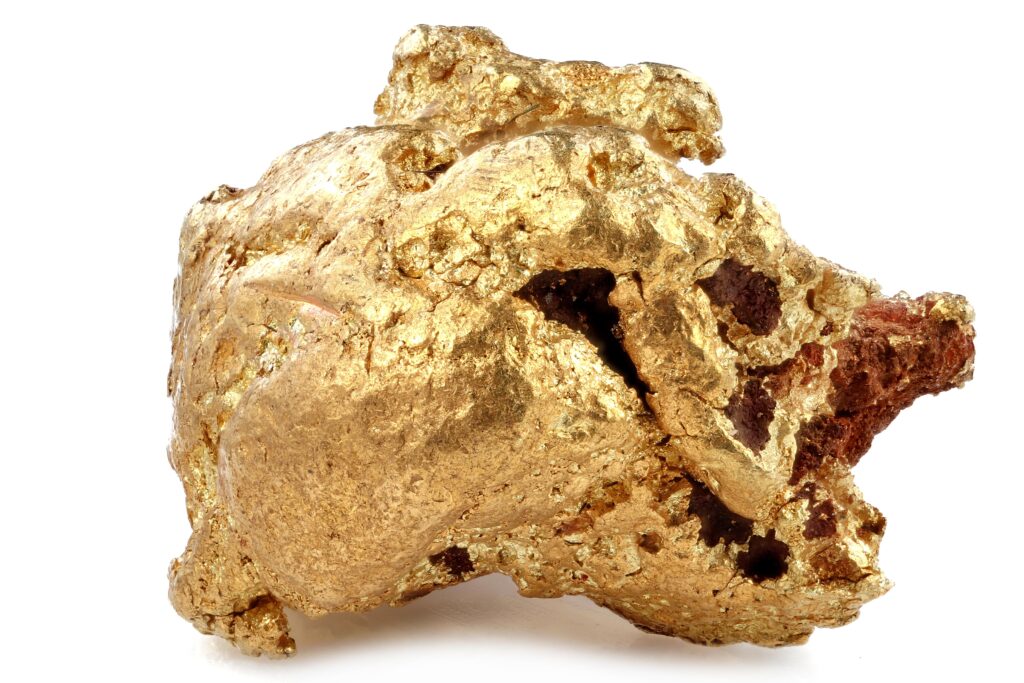Where they come from and how to measure them
Due to its unique physical and chemical properties, mercury has been widely studied and utilized by many civilizations and industries since the early ages. Its ability to form alloys with metals, including precious metals, has been particularly valued by the mining industry around the world. In this article, we’ll cover the two ways in which mercury use and release have been historically associated with gold mining.

The first is naturogenic, relating to the fact that mercury occurs naturally in the Earth’s crust and, as a result, becomes chemically bonded with gold ores, subsequently becoming a byproduct of the mining extraction process. Depending on geological and atmospheric activity, as well as human-induced mercury circulation and re-emission into the atmosphere, certain geographical areas may hold bigger deposits of mercury-containing gold ores. In the U.S., most new byproduct mercury is produced in Nevada, which is home to more than half of national gold mines. In the last few decades, during the rise of general awareness of mercury toxicity, both the U.S. EPA and Nevada Division of Environmental Protection established federal and state regulations requiring mercury pollution control for gold mines.
The other mining-related mercury release is linked to the largest source of anthropogenic mercury pollution on Earth, which occurs during artisanal and small-scale gold mining (ASGM). In this method, liquid elemental mercury is added to the sediment forming a mercury-gold amalgam which is subsequently heated, vaporizing the mercury to produce gold pellets. This process releases mercury vapors into the atmosphere, and mercury-containing mine refuse into the land and water. According to the U.S. EPA, 37% of global air emissions of mercury are produced by ASGM. In the United States, mercury amalgamation for gold recovery has effectively ceased since last century. However, this mining method is still widely used in over 70 countries in locations with limited access to more advanced mining technology.
Both ways of gold mining-related mercury release are of substantial environmental concern since both negatively impact human health, wildlife, and certain ecosystems, with many often irreversible toxic effects.
There are many ongoing efforts geared to promote the importance and benefits of managing mercury pollution control and reducing emissions on national and global levels. Rephrasing a famous Peter Drucker quote, “…to manage something, you have to be able to measure it first.”
The current marketplace offers several mercury measurement technologies to monitor mercury release during gold mining activity, with gold film resistivity, fluorescence

spectroscopy, and atomic absorption (AA) spectrometry being the most common ones. While all these options will do the job in “perfect conditions,” the two main factors to consider when choosing a mercury meter are its detection range and the ability to withstand interferences.
Ohio Lumex takes pride in offering several mercury measurement device options that can detect at the lowest possible levels and widest possible ranges of all mercury species. While other AA spectrometers can detect down to similarly low levels, Zeeman correction technology sets our mercury analyzers apart thanks to its ability to perform accurately even when faced with the most common interferences like humidity, smoke, hydrocarbons, chemical vapors, etc. All of our mercury analyzers meet or exceed the U.S. EPA and ATSDR standards as well as OSHA, NIOSH, ACGIH, and MSHA action levels for industrial and residential remediation actions.
Ohio Lumex’s RA-915 Mercury Analyzer has been on the U.S. EPA toolkit for almost two decades and is a go-to instrument for national and regional mercury spill responses and emergencies.
Below you can view the available options from our portable and permanent installation mercury monitors and analysis systems. We offer cost-efficient custom configurations on request.
Mercury Monitor for Ambient Air (RA-915 AM)
Mercury Vapor Analyzer for Ambient Air (RA-915M)
Mercury Vapor Analyzer for Ambient Air (Light 915)
Mercury Analysis System for Solids and Liquids (RA-915F)
Mercury Analysis System for Solids and Liquids (PYRO-915 with RA-915M)

